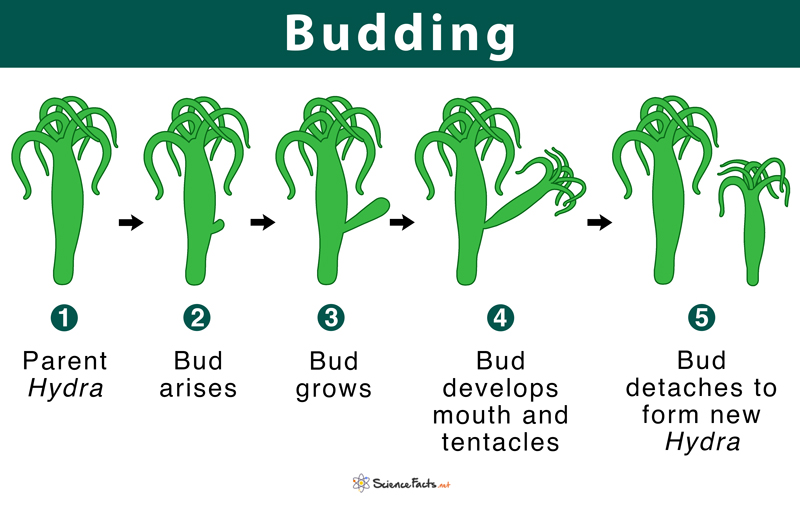Examples of Organisms That Use the Method Few unicellular organisms such as bacteria, fungi (e.g., yeast), and protozoa, a number of metazoan animals including certain cnidarian species (e.g., Hydra) and various plants.
Budding in Other Organisms
In Yeasts By repeating this process, budding produces what appear to be a chain of yeast cells under a microscope. At the same time, the parent cell may also start producing a new bud causing it to appear branched. Examples: Saccharomyces cerevisiae In Bacteria Here, a small bud forms at one end of the mother cell or on filaments called prosthecae. With growth, the bud continues to enlarge while the size of the mother cell remains constant. This is followed by DNA replication in the mother cell and their separation into the bud. When the bud is almost the same size as the mother cell, it gets separated to form a new individual. Examples: Cyanobacteria, Rhodopseudomona, Hyphomicrobium, and Planctomyces In Plants In plants, it is a form of vegetative reproduction during which roots or stems of plants give rise to an entire new plant through repetitive division of cells present in those parts. Budding can also be induced artificially by horticulture, a propagation technique commonly known as grafting. Here the bud or scion from one plant is transferred inside the other, allowing both plants to grow together. Examples: Rose plants; the method is utilized in horticulture to produce new plants in the bud grafting technique.
A fast process of reproductionOnly requires a single parent and does not need a mating partner for the reproduction to happenAllows good genes of the parent to be passed down to the daughter cell
Disadvantages
The organisms originated from budding are incapable of adaptation to changes in the environment, and thus are at risk of becoming extinctNew varieties of organisms with new genetic makeup cannot be developed
